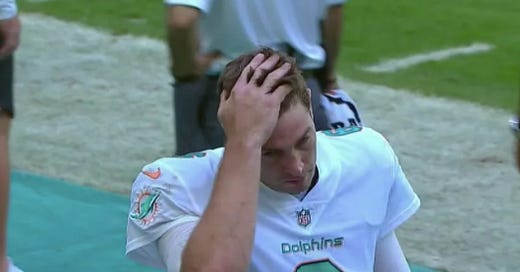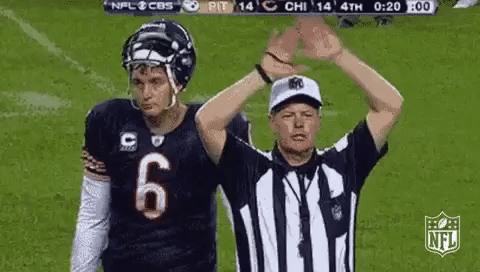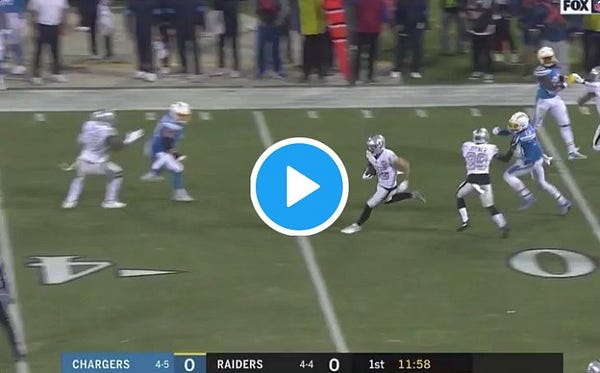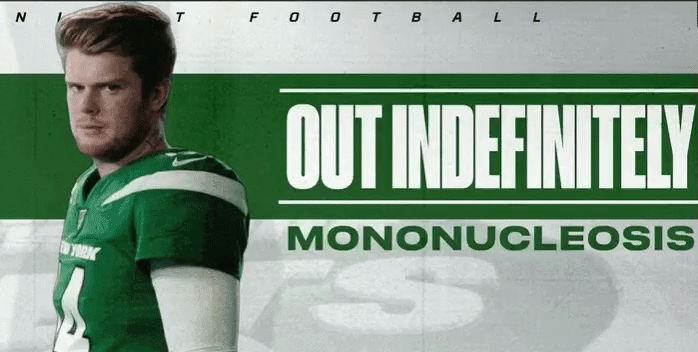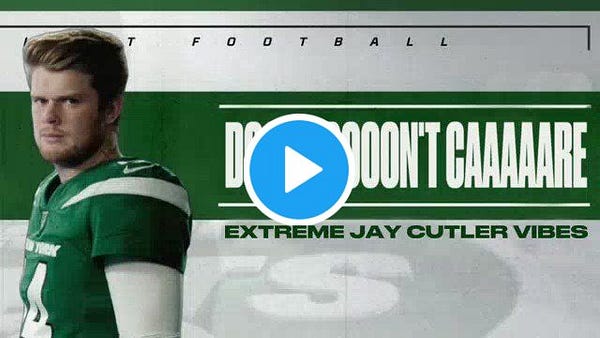Which NFL quarterback will be 2020's Jay Cutler?
A three-stage competition to find the high-potential, low-production, meme-spawning overlord of a new football decade
Jay Cutler only won a single playoff start in a 12-year, $122 million NFL career. He made a single Pro Bowl. The only categories in which he led the league over a full season were interceptions and sacks taken.
His on-field accomplishments were limited. But his place in the cultural zeitgeist is unquestioned.
For a decade-plus, Cutler was equal parts meme, budding star, and talk radio powder keg. He’s instantly recognizable by a non-plussed face and the carefree attitude that’s followed him from the gridiron to, somehow, reality television (and now divorce court, because love is dead and we are all lying to ourselves). There may not ever be another Jay Cutler.

Or there might be.
Cutler’s status as a sigil of big-armed potential and limited on-field returns made him his generation’s version of Jeff George. Now that he’s slunk into retirement and, god willing, a place in a CBS booth on some upcoming Sunday, the position he’s vacated is set for a reboot.
Cutler was a tangled ball of frustration no matter where he went. His most efficient season as a quarterback — one in which he tied for the league lead in fourth quarter comebacks and game-winning drives — was a season the Bears went 6-10. He forced his way out of Denver to kick off Josh McDaniels’ doomed tenure with the Broncos. Chicago paid handsomely for his services, then got two playoff starts and zero Pro Bowl invitations out of him in eight years.
Which active quarterback can take up that mantle of tantalizing potential and limited production in 2020? I broke this year’s candidates down by three extremely Jay Cutler traits and applied them to 2019’s crop of starting QBs. 16 candidates — roughly half the league’s starters! — fit the bill in some way.
Others could join them. As much as I would have liked to compare this year’s crop of incoming passers to Cutler, lining up his college stats against 2020’s rookies would be futile. How can you measure up Joe Burrow throwing to a litany of future NFL wideouts vs. Cutler slinging passes to Earl Bennett (yay!), Erik Davis, and Dustin Dunning (oh no) in a losing effort against Middle Tennessee? That would be like comparing a Ferrari to a rusted out Soviet tank in modern day Kyrgyzstan.
Who will hold the Cutler crown in 2020? Here’s where the competition begins.
Trait 1: Moderate efficiency with a hint of upside
Candidates: 16
There are several metrics that can measure Cutler’s boom-or-bust tendencies and the toll it took on the Broncos, Bears, and Dolphins. The best may be adjusted yards per pass, which takes his average yards gained per attempt, then balances that against touchdown passes and interceptions to create a more comprehensive view of how his typical dropback turned out. Cutler’s AY/A at his Chicago peak was 6.9. His career number was 6.6.
Who fit that bill in 2019? 16 different QBs fell into the Cutler zone — within 0.3 AY/A of his peak and 0.3 AY/A of his career average:
Starting QB and 2019 AY/A
Jameis Winston: 7.1
Matt Ryan: 7.1
Philip Rivers: 7.1
Jared Goff: 7
Carson Wentz: 7
Case Keenum: 6.9
Tom Brady: 6.8
Cam Newton (2018-19): 6.8
Jacoby Brissett: 6.8
Ryan Fitzpatrick: 6.7
Josh Allen: 6.7
Kyler Murray: 6.6
Drew Lock: 6.6
Joe Flacco: 6.6
Daniel Jones: 6.5
Sam Darnold: 6.4
Ryan Tannehill averaged 6.7 AY/A through his Dolphins career (including one lost season in which Cutler served as his replacement) but rewrote his history with an MVP-adjacent 2019 in Tennessee (his 10.2 AY/A was more than a yard higher than the next closest starting QB last fall). That takes a great candidate off the list, but we’re already jam-packed with potential Cutlers 2.0 to begin with.
That’s a good start with a few surprising names on the list. Let’s whittle it down further with another signature Cutler standby.
Trait 2: The arm strength to throw a football over those mountains (and the instinct to keep trying, even when it’s goddamn impossible)
Candidates: 5
Cutler’s ability to throw a football through a half-inch sheet of plywood from 30 yards away was the upside that made his flaws tolerable. At his best, he could escape pressure — he averaged 4.6 yards per carry from 2007 to 2016! — slide out of the pocket, and then deliver a back-foot bomb over the outstretched hands of the cornerback-safety combo converging on an extremely covered target.
Of course, this prowess also emboldened him to make so, so many stupid throws.
Stupid throws led to easy interceptions in big moments. Cutler threw 160 picks in 153 career games, and while some weren’t his fault — tipped passes, dropped balls, etc — the majority very much were. He never had a season in which he threw twice as many touchdowns as interceptions.
Cutler’s career touchdown rate was 4.6 percent. His interception rate was 3.3. Of the 14 remaining candidates, here are the passers who fell into a similar range (TD rate of at least 3.5 percent AND at most 1.4 points higher than INT rate) in 2019:
Jameis Winston (5.3 TD%, 4.8 INT%)
Philip Rivers (3.9, 3.4)
Jared Goff (3.5, 2.6)
Ryan Fitzpatrick (4.0, 2.6)
Sam Darnold (4.3, 2.9)
It’s worth noting players like Kyle Allen, Baker Mayfield, and Mitchell Trubisky all fell into the Cutler variance zone, but failed to meet the AY/A average needed to make it this far. Everyone else fell off the list because they threw too few interceptions or, in Joe Flacco’s case, not enough touchdowns.
On the field Cutler brought got a big arm, a predilection for bad decisions, and the efficiency and playmaking never good enough to earn stardom, but never bad enough to outright suggest a benching. There’s one major panel of this paint-by-numbers portrait of Chicago frustration left to fill.
Trait 3: A mostly blank and utterly memeable public face
Candidates: 2
Cutler’s leadership resonated through the locker room — he gained the trust of many of his Bears teammates throughout his Chicago tenure, with few exceptions — but that failed to translate to just about anyone watching his games from the stands or at home. Cutler’s stoic demeanor and outward aloofness, including his ability to ignore officials making calls only inches from his face…
made him a blank canvas for criticism. Without a fiery personality and explicit sports-movie style intensity, Cutler’s flaws could be attributed to a lack of effort or interest even if neither were the case.
The second coming of JC would need to have a similarly uninvested public-facing personality. He’d also need the magic combination of notoriety and image pliability to be immortalized in memes across the internet for decades to come. This disqualifies three more candidates.
Winston certainly embodied the “I have the arm strength to turn this double coverage into a touchdown …SHIT” attitude that defined Cutler.

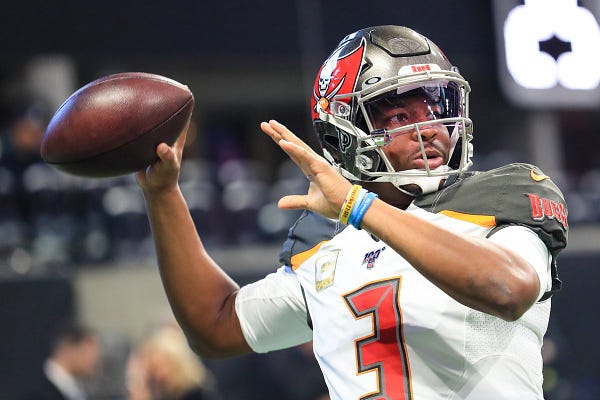
However, his demeanor on and off the field aren’t a match. Cutler never cared enough to curl his fingers into the letter W and pretend to eat them in order to ineffectively hype his teammates. He was also never suspended by the league or subject to multiple troubling accusations of sexual assault.
Fitzpatrick was Cutler-ian early in his career — big arm, nerd school (Harvard vs. Vandy) background, a career that failed to live up to a big contract — but any early indifference has been lost in a late 2010s surge of FitzMagic. If he wasn’t mostly beloved before 2019, he certainly was after knocking the Patriots out of a first round bye in Week 17 for a Dolphins team for which he was leading passer AND rusher.
Rivers is a renowned on-field trash talker, albeit in increasingly dumb ways:

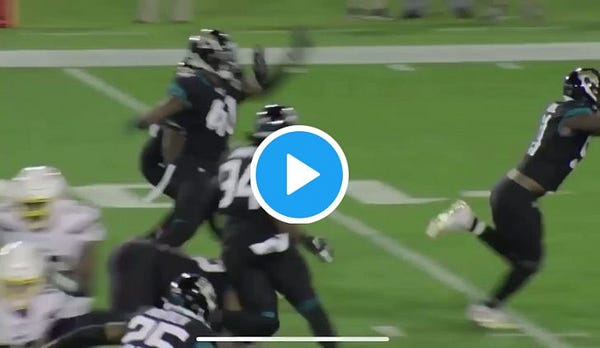
But his post-interception chasedowns are certainly reaching Cutler effort levels:
That snakebitten 5-6 postseason record fits as well. But as much as he may be Cutler-ian behind center, his uncontainable emotions through good and bad exclude him from the comparison …barely.
That leaves us with two young candidates: Goff and Darnold.
Darnold gave us two of 2019’s lasting memes. He introduced us to in-game seance-ing when the Patriots made him see ghosts. He was also subjected to this amazing banner courtesy of ESPN’s squad of lunatic in-game graphic interns:
Yeesh.
Goff is more of a blank page. The former MVP candidate’s most notable off-the-field foray into meme-building was when he went posed as a junior college transfer QB — a prank that reinforces how no one knows who he is.
But Goff made it past the NFC title game and briefly lived up to his potential as a Super Bowl quarterback. While his 2019 season was a significant letdown, it’s not necessarily a harbinger of things to come. Crossing him off the list (… for now) leaves us with one true heir to the Cutler throne in 2020:
Darnold is talented enough to overcome his early career struggles — and it’s worth pointing out the Jets went 7-6 with him as a starter last fall, even after he overcame mononucleosis. New York has invested in helping him reach his potential as well, adding scores of offensive line help in free agency as well as bringing wideouts like Breshad Perriman and second-round draftee Denzel Mims into the fold. He may be everything for which the Jets have hoped.
But through two seasons as a pro, his average pass depth is exactly the same (8.3 yards) as Cutler’s was his last three seasons, but with less accuracy. His career sack rate (6.9 percent) is 0.2 points lower than Cutler’s as a Bear. Coincidentally, Darnold’s head coach Adam Gase was the offensive coordinator behind the most efficient season of Cutler’s career in 2015.
Cutler averaged 229.6 yards per game, an 85.3 passer rating, and 7.7 wins per 16-game regular season as a pro. Darnold is at 226.5 yards, a 81.1 rating, and 6.8 wins every 16 games.
It’s a very small sample size and by no means a condemnation of his NFL destiny. A lot can change in the immediate future, and Darnold could prove to be a franchise cornerstone.
But heading into 2020, he sure looks a lot like the former Bears passer who slid off our Sunday broadcasts and onto the E! network last fall.

